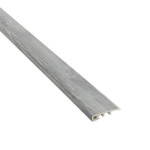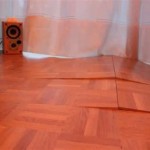Oak Stain For Hardwood Floors: A Comprehensive Guide
Oak hardwood flooring remains a popular choice for homeowners due to its inherent strength, durability, and natural beauty. The ability to customize the look of oak flooring through staining is a significant advantage, allowing homeowners to achieve a wide range of aesthetic styles. Oak stain, in particular, is a frequently selected option, offering a variety of hues that can enhance the wood's grain and complement diverse interior designs. This article provides a detailed overview of oak stain for hardwood floors, covering essential aspects from preparation and application to maintenance and color selection.
Understanding the Properties of Oak Wood
Before delving into the intricacies of oak stain, it is crucial to understand the properties of oak wood that influence the staining process. Oak is a hardwood species characterized by its prominent grain patterns and open pores. There are two primary types of oak used for flooring: red oak and white oak. Red oak exhibits a reddish hue and a more porous structure, making it more absorbent of stain. White oak, on the other hand, possesses a more neutral color and a tighter grain, resulting in less stain absorption. The difference in porosity between these two oak varieties directly impacts the final appearance of the stained floor.
The open pores of oak wood allow stain to penetrate deeply, accentuating the grain and creating a textured look. However, this characteristic also means that oak wood is susceptible to uneven stain absorption if not properly prepared. The presence of knots, variations in wood density, and previous finishes can all affect how the stain is absorbed, potentially leading to an inconsistent color across the floor. Therefore, proper sanding and surface preparation are critical steps in achieving a uniform and aesthetically pleasing stained oak floor.
Furthermore, the natural tannins present in oak wood can react with certain types of stain, affecting the final color. Water-based stains, for example, may react differently with oak compared to oil-based stains. Therefore, it is essential to test the stain on a small, inconspicuous area of the floor to ensure the desired color is achieved before applying it to the entire surface.
Key Considerations for Selecting Oak Stain
Choosing the right oak stain involves considering several factors, including the desired aesthetic, the type of oak flooring, and the existing décor of the home. The color of the stain can significantly impact the overall ambiance of a room, making it essential to select a shade that complements the existing furniture, wall colors, and lighting. Light-colored stains, such as natural oak or whitewash, can brighten a room and create a more open and airy feel. Dark-colored stains, such as ebony or dark walnut, can add warmth and sophistication, creating a more intimate and dramatic atmosphere.
The type of oak flooring, whether red oak or white oak, also influences the choice of stain. Red oak, with its reddish undertones, tends to pair well with warmer stain colors, such as cherry or mahogany. White oak, with its neutral tones, offers more versatility and can accommodate a wider range of stain colors, including grays, browns, and even some cooler shades. The selection should aim to enhance the natural beauty of the wood while achieving the desired overall aesthetic.
Beyond color, the type of stain also plays a crucial role. Oil-based stains penetrate deeply into the wood, providing excellent color saturation and durability. They tend to enhance the grain pattern and offer a longer open time, allowing for easier application and blending. However, oil-based stains typically have a stronger odor and require more time to dry. Water-based stains, on the other hand, have a lower odor and dry more quickly. They are also more environmentally friendly. However, water-based stains may not penetrate as deeply as oil-based stains and may require more coats to achieve the desired color intensity.
The sheen level of the finish applied over the stain is another essential consideration. Options range from matte to high gloss, each offering a different aesthetic and level of durability. Matte finishes provide a natural, understated look, while high-gloss finishes offer a more reflective and dramatic appearance. The sheen level should be chosen based on personal preference and the desired level of maintenance.
The Process of Applying Oak Stain to Hardwood Floors
Applying oak stain to hardwood floors is a multi-step process that requires careful preparation and execution. The first step is to thoroughly sand the floor to remove any existing finishes, imperfections, and debris. The sanding process typically involves using progressively finer grits of sandpaper, starting with a coarse grit to remove the old finish and ending with a fine grit to create a smooth, even surface. It is crucial to vacuum the floor thoroughly after each sanding pass to remove any dust particles that could interfere with the stain application.
After sanding, the floor should be cleaned with a tack cloth or a damp cloth to remove any remaining dust. The application of a wood conditioner or pre-stain wood conditioner is often recommended, particularly for porous woods like oak. A wood conditioner helps to even out the absorption rate of the stain, preventing blotchiness and ensuring a more uniform color. The wood conditioner should be applied according to the manufacturer's instructions and allowed to dry completely before applying the stain.
The stain should be applied evenly using a brush, roller, or rag, following the direction of the wood grain. It is important to work in small sections and avoid applying too much stain at once, as this can lead to an uneven finish. After applying the stain, allow it to penetrate the wood for the recommended amount of time, as specified by the manufacturer. The longer the stain penetrates, the darker the color will be. Once the desired penetration time has elapsed, wipe off any excess stain with a clean cloth, again following the direction of the wood grain.
Allow the stain to dry completely, typically for 24 to 48 hours, before applying a protective finish. The finish, such as polyurethane or varnish, will protect the stained floor from wear and tear and enhance its durability. Apply several coats of finish, allowing each coat to dry completely before applying the next. Lightly sand the floor between coats of finish to create a smooth, even surface. The final result should be a beautifully stained and protected oak hardwood floor that enhances the overall aesthetic of the home.
Proper ventilation is crucial throughout the staining and finishing process. Open windows and use fans to ensure adequate airflow, as many stains and finishes contain volatile organic compounds (VOCs) that can be harmful if inhaled. Safety precautions, such as wearing gloves and a respirator, are also recommended to protect against skin irritation and respiratory problems.
Maintaining a stained oak floor involves regular cleaning and occasional refinishing. Sweep or vacuum the floor regularly to remove dirt and debris that can scratch the finish. Use a damp mop with a mild cleaner specifically designed for hardwood floors to clean the floor as needed. Avoid using harsh chemicals or abrasive cleaners, as these can damage the finish. Over time, the finish may wear down, requiring refinishing to restore its luster and protect the wood. Refinishing involves sanding the floor to remove the old finish and applying a new coat of stain and finish. With proper care and maintenance, a stained oak hardwood floor can last for many years, providing beauty and durability to the home.

What Color Should I Stain My Wood Floors

Choosing Hardwood Floor Stains

What Color Should I Stain My Wood Floors

Red Oak Floor Stains Photo Guide

Oak Wood Floors Learn To Love This Classic Look Stefana Silber

Hardwood Floor Stain Colors How To Choose Daily Splendor

Bona S Expert Guide To Floor Stains Enhance Your Interiors

What Color Should I Stain My Wood Floors

Hardwood Floor Stain Colors Choosing The Best Options Flooring America

Light Stain On Red Oak Refinishing Floors
Related Posts








